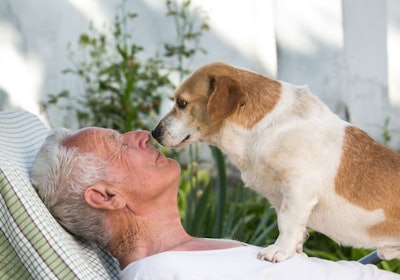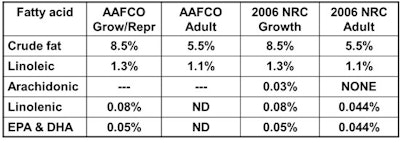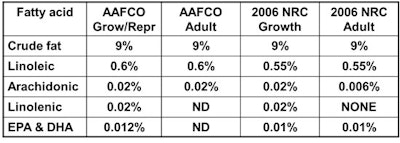
From outside to in, dogs, cats and other pets may benefit from omega-3 fatty acids in their diets, while the nutrients are most needed during specific stages of a pet’s life. Companion animal researchers have found evidence of the fatty acids helping with skin and coat conditions, Dr. Greg Aldrich, pet food program coordinator at Kansas State University, wrote in his Ingredient Issues column in Petfood Industry. Omega-3 fatty acids may support the immune system to prevent disease, while reducing heart and kidney failure. In early life, omega-3 fatty acids help nervous system development. At the other end of life, the chemicals may mitigate aging’s effects on cognition and other systems.
Along with omega-3, dogs and cats benefit from consuming omega-6 fatty acids.
“Linoleic acid and arachidonic acid are omega-6 fatty acids, while linolenic acid, EPA, and DHA are omega-3 fatty acids,” Dr. Kelly Swanson, University of Illinois at Urbana-Champaign animal nutrition professor, wrote in an email. He provided these charts of pet’s dietary recommendations.
Dog dietary recommendations for fatty acids

Cat dietary recommendations for fatty acids

While pet nutrition researchers may consider these omega-3 and -6 fatty acids essential in dog and cat diets, both types are more accurately considered as conditionally required, based on life stage, Aldrich wrote in an email. For example, alpha linolenic acid (ALA), eicosapentaenoic acid (EPA) and docosahexaenoic acid (DHA) play roles at different times in a pet’s life.
“Specifically, with the 2006 NRC and the resulting updates to the 2016 AAFCO nutrient profiles it was identified that breeding animals, young growing animals had a requirement for these three omega-3 fatty acids in relatively low quantities,” he wrote.
Cats also require arachidonic acid (ARA) an omega 6 fatty acid, he wrote.

















